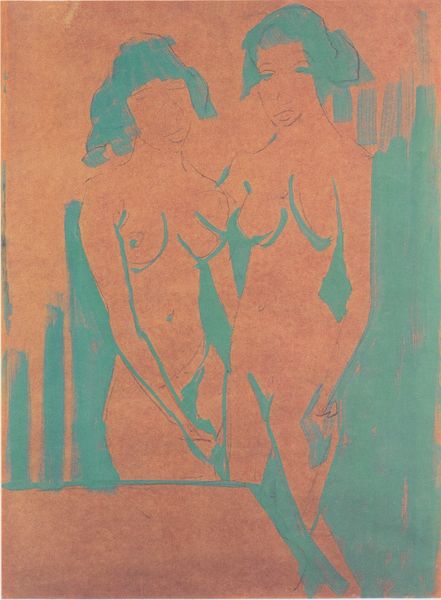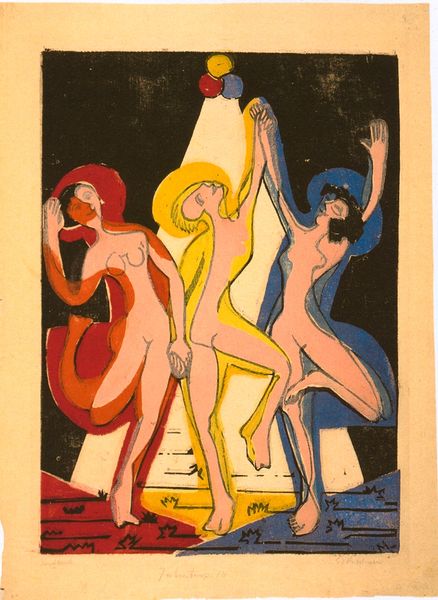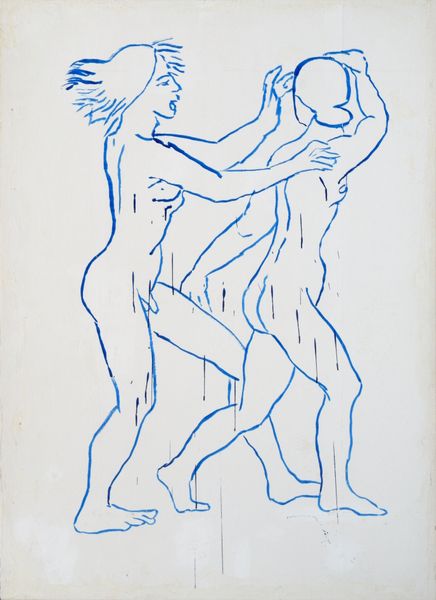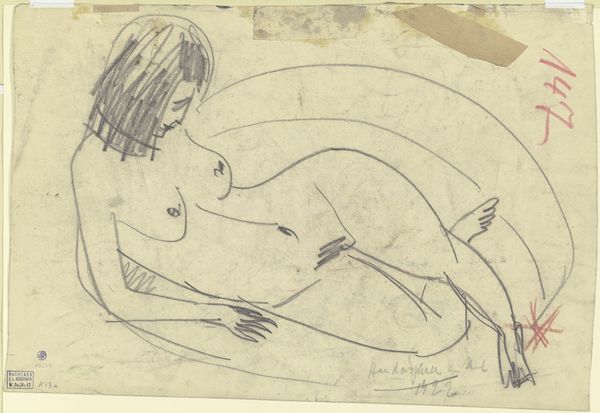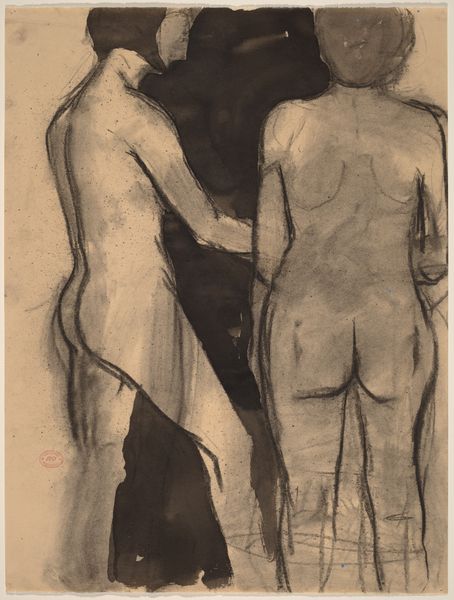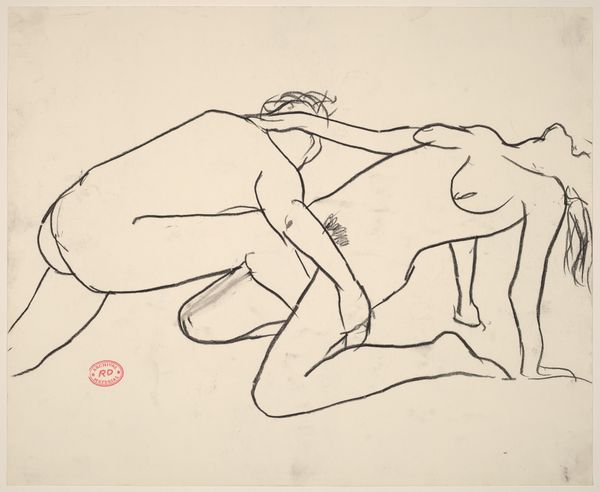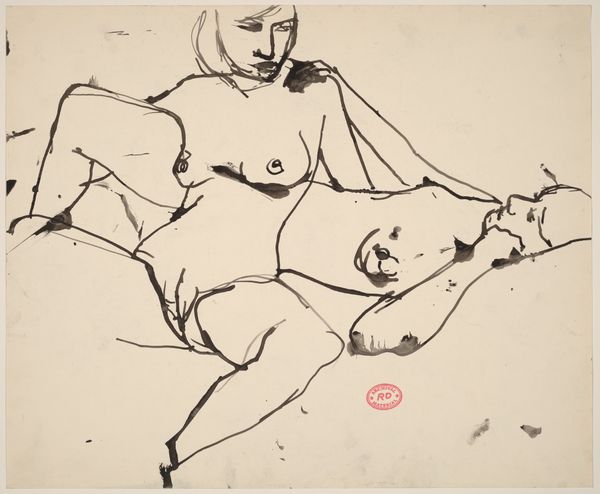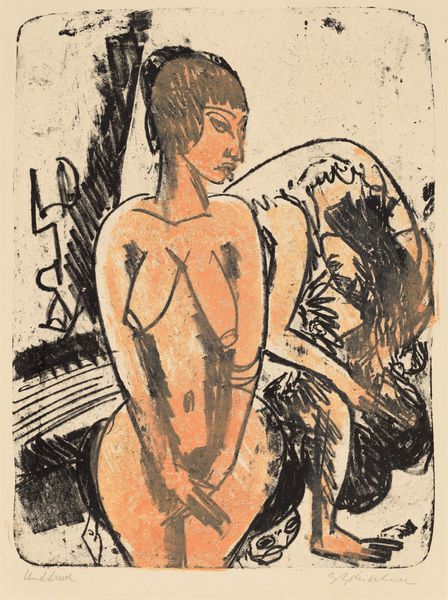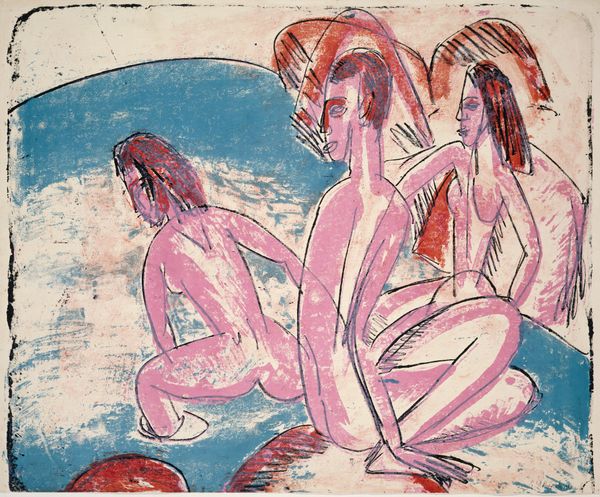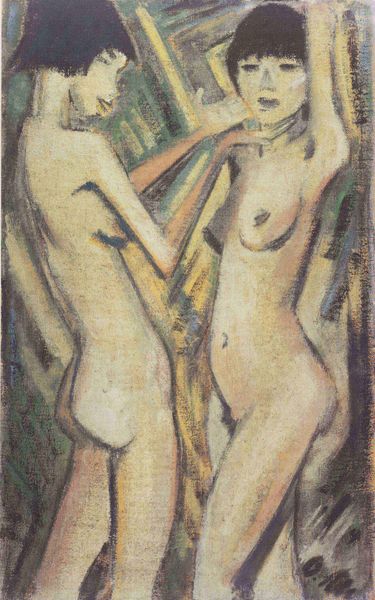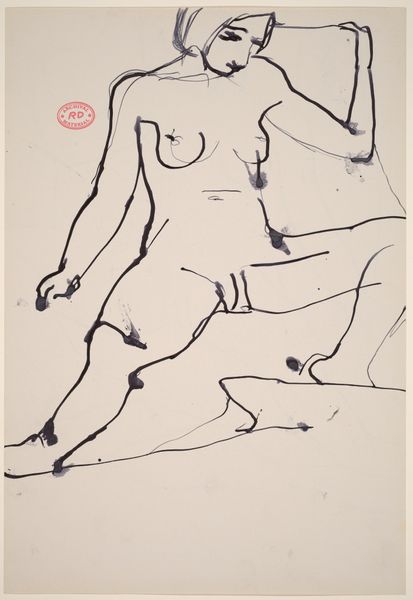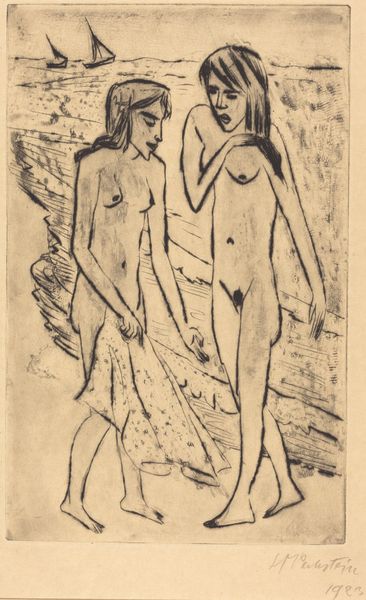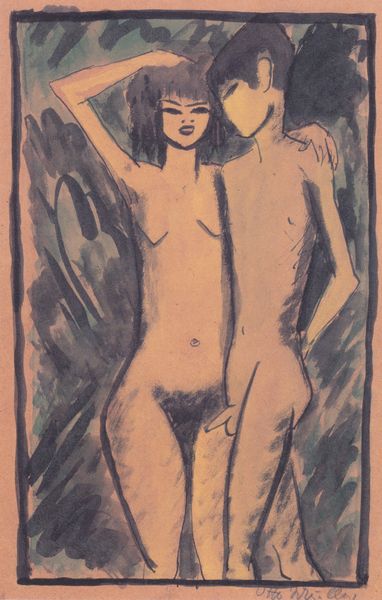
Dimensions: 49.6 x 34.5 cm
Copyright: Public domain
Curator: Ernst Ludwig Kirchner’s 1934 woodcut, "Three Nudes and Reclining Man," pulsates with an unsettling energy, wouldn't you agree? Editor: Absolutely, there's an almost frenzied quality to the composition, particularly in the contrasting colors. That stark blue background seems to push the figures forward, intensifying the emotional impact. Curator: Note how Kirchner’s aggressive lines disrupt the conventional presentation of the nude. There's a raw directness, a refusal to idealize, that echoes the Expressionist concern with conveying subjective experience. Editor: That directness screams process, too. You can almost feel the hand of the artist digging into the woodblock, carving out these figures. I'm also curious about the socio-economic backdrop, coming when it does in pre-war Germany. What kind of workshops did Kirchner use? How accessible were his prints to the wider public? Curator: His treatment of form challenges conventional perspectives and proportion—the figures seem almost disjointed, their anatomy exaggerated for emotional emphasis. We should observe the way the bodies intertwine—a tangle of limbs and ambiguous spaces. What is your understanding of the relation between the bodies represented? Editor: It strikes me as an erotic tension bordering on anxiety. The artist captures a raw, almost brutal sense of desire. You can imagine that labor under the artist's knife: the cuts, the grain of the wood itself contributing to that anxious mood you are speaking of. Curator: The woodcut medium itself adds to that feeling; it’s far from the classical smoothness and finish of academic nudes. But there is formal integrity to the geometric tension that underlies all German Expressionist art. Editor: I would definitely like to understand the role the workshops in Dresden played in Kirchner's output. The materials used to carve, ink, and press each image become equally integral to this analysis, telling us about consumption practices in 1930s Germany, which contextualized this provocative image. Curator: Ultimately, it becomes an extremely subjective perspective into human feeling that is also the material means used to present it to us. Editor: Well, for me, this approach reveals how artistic visions intersect with labor conditions and available technologies in pre-war Europe. We shouldn't ever disentangle those elements.
Comments
No comments
Be the first to comment and join the conversation on the ultimate creative platform.
